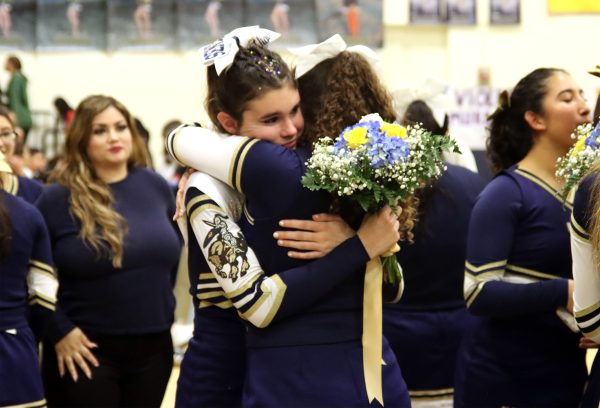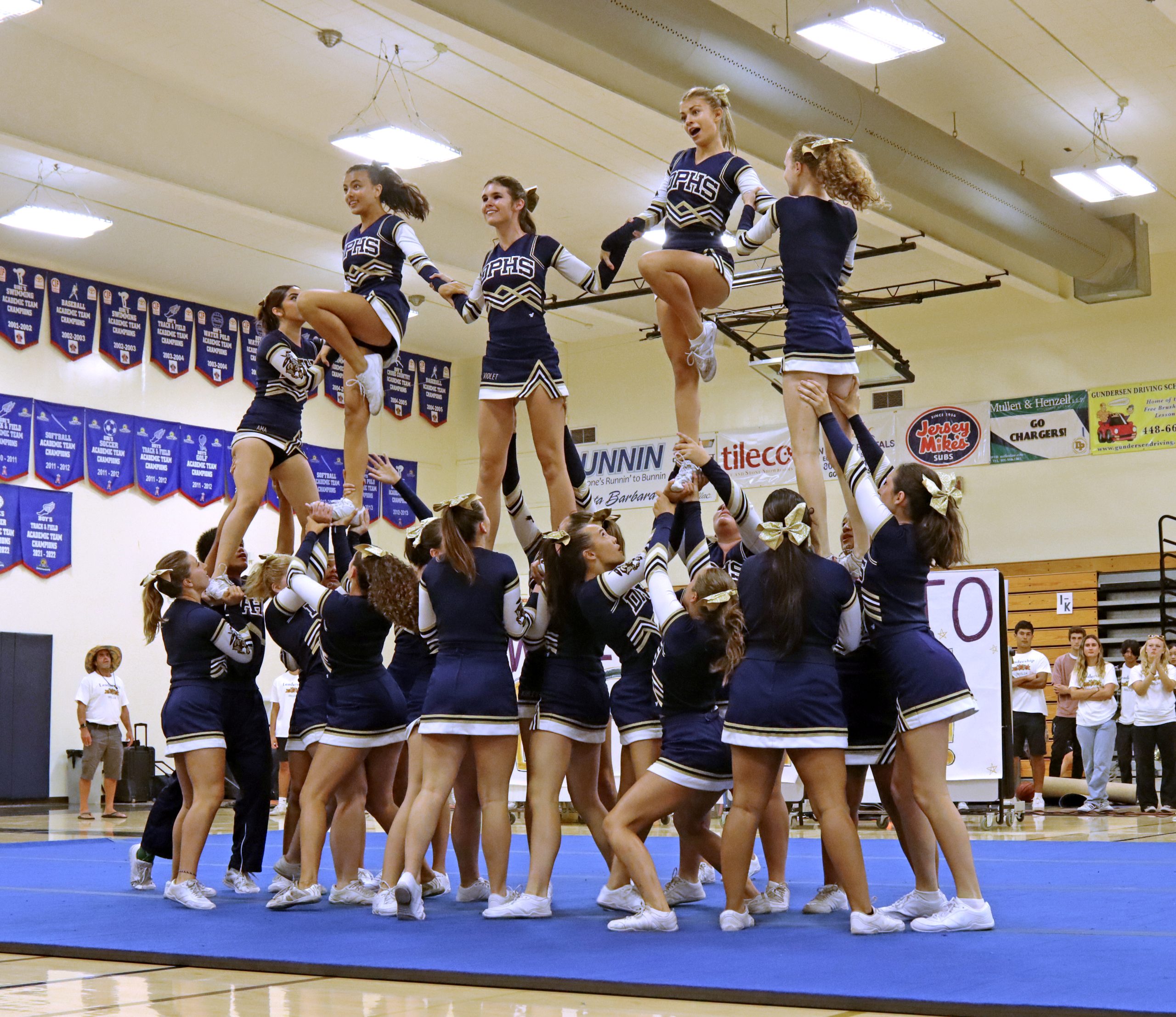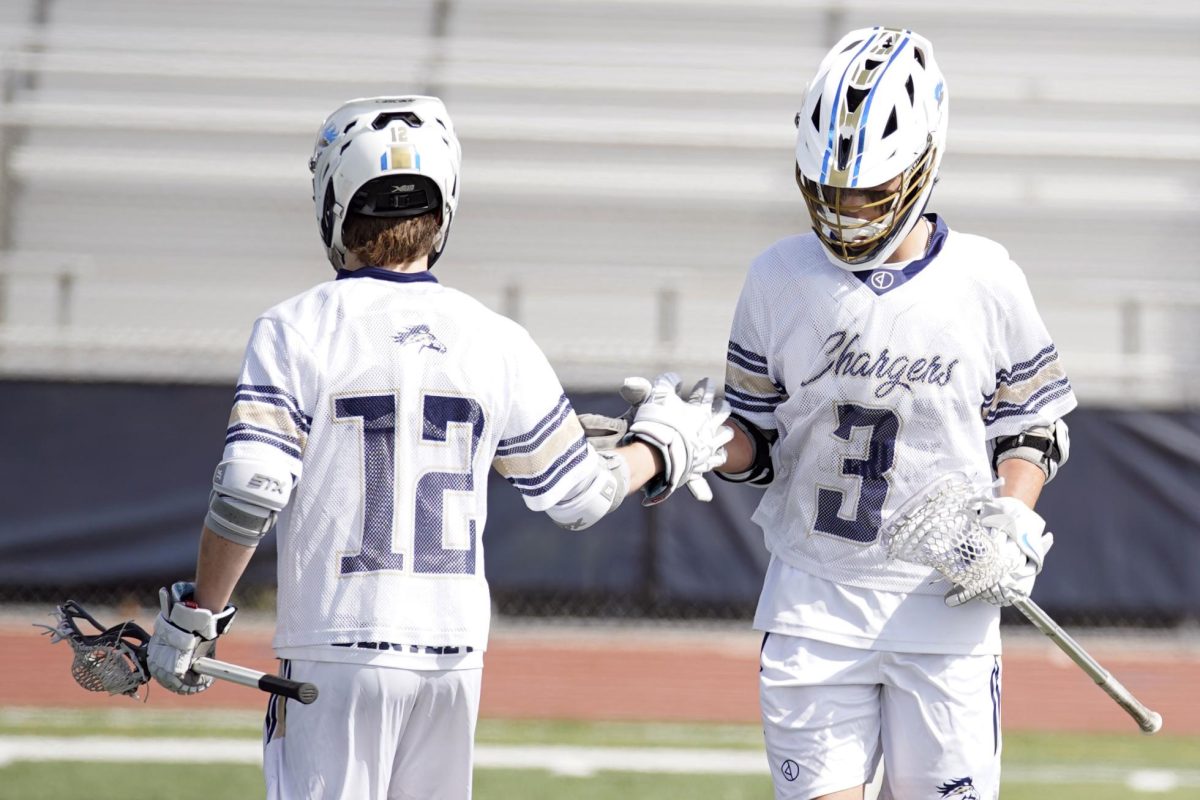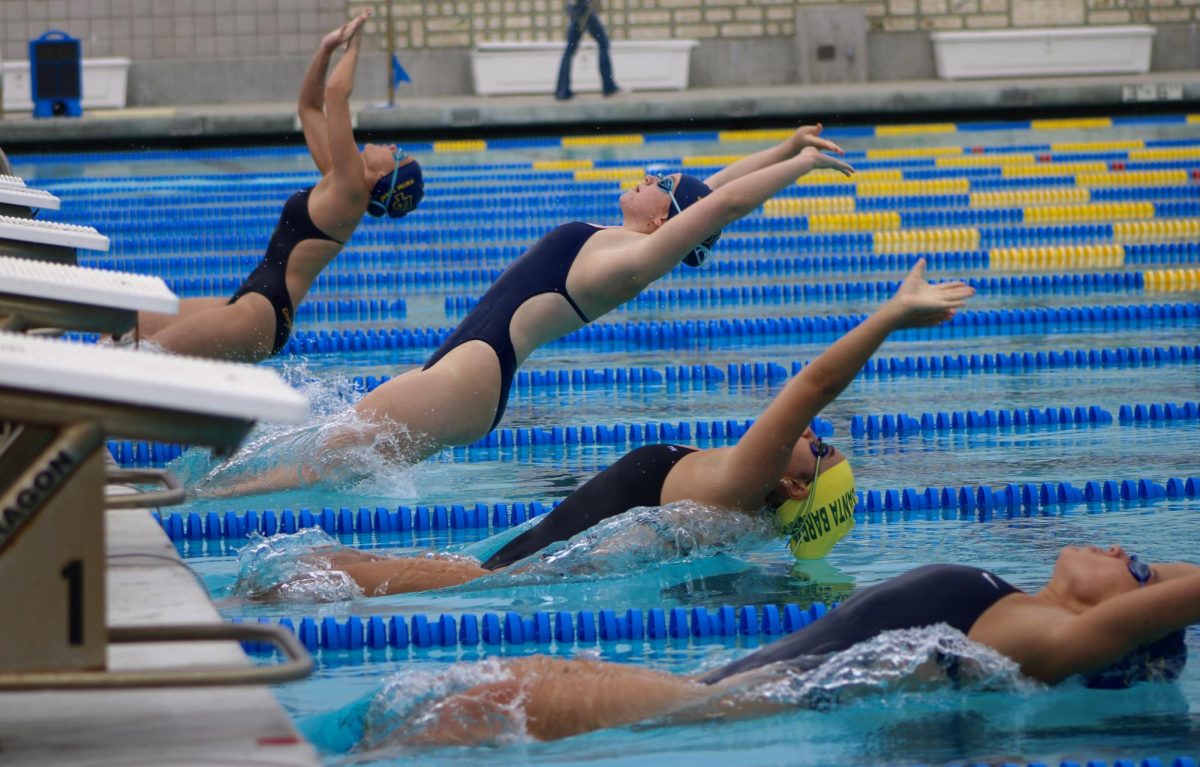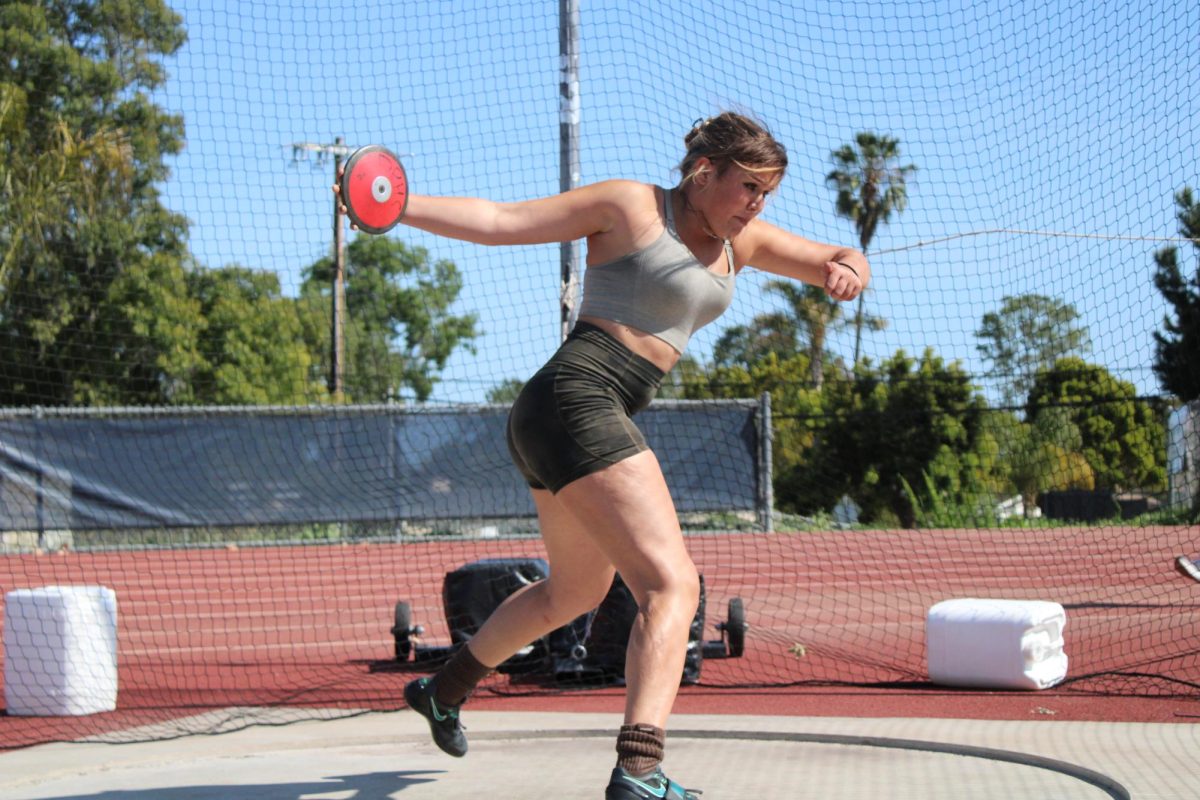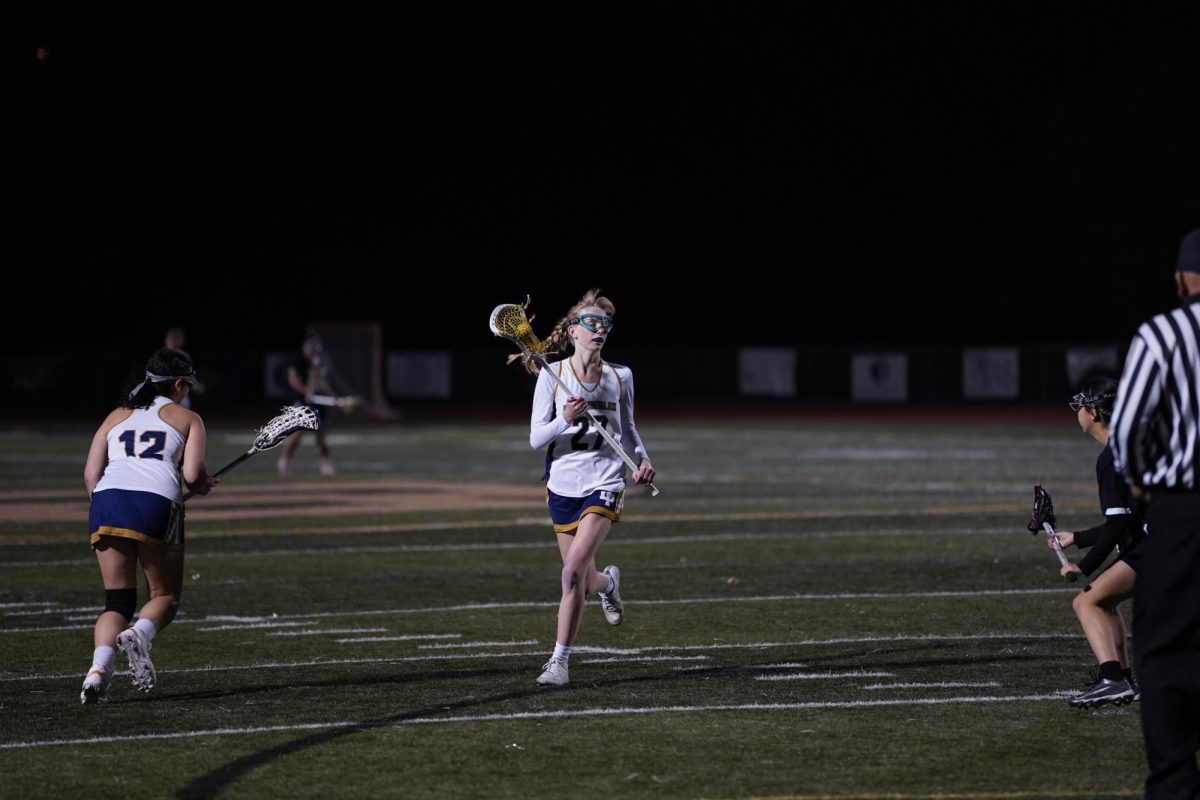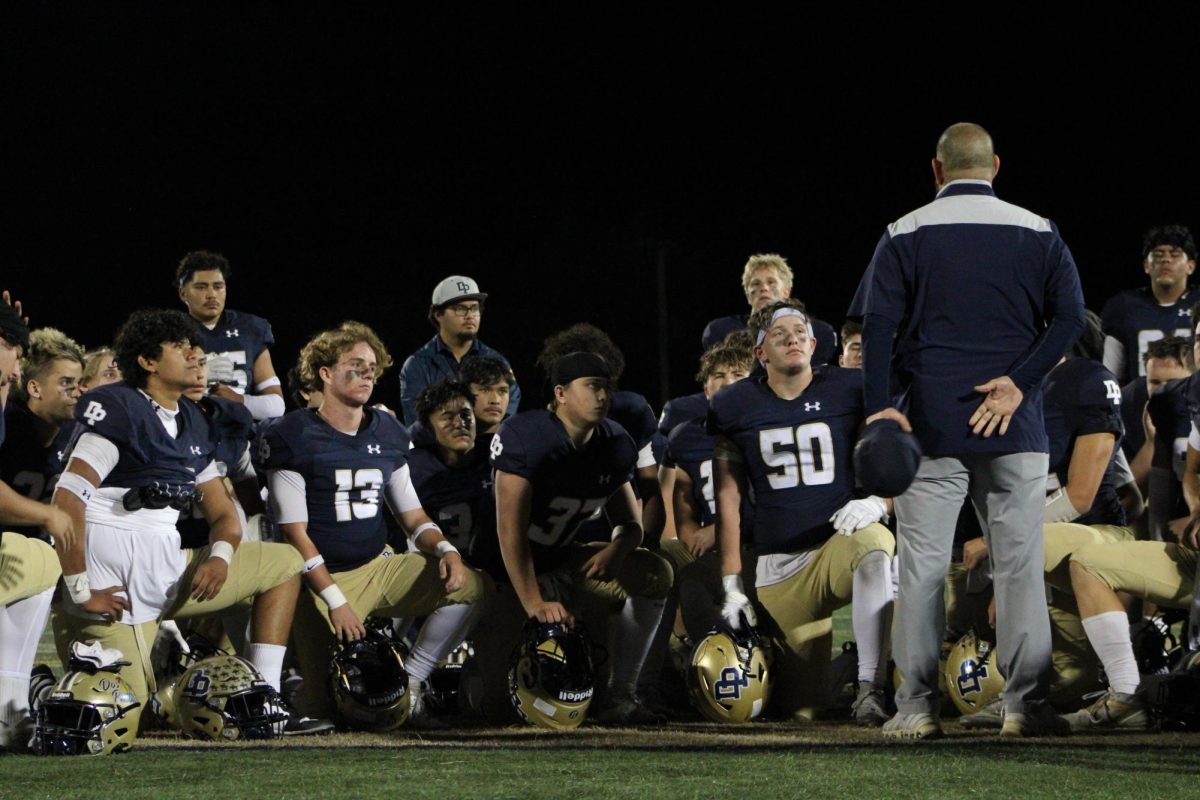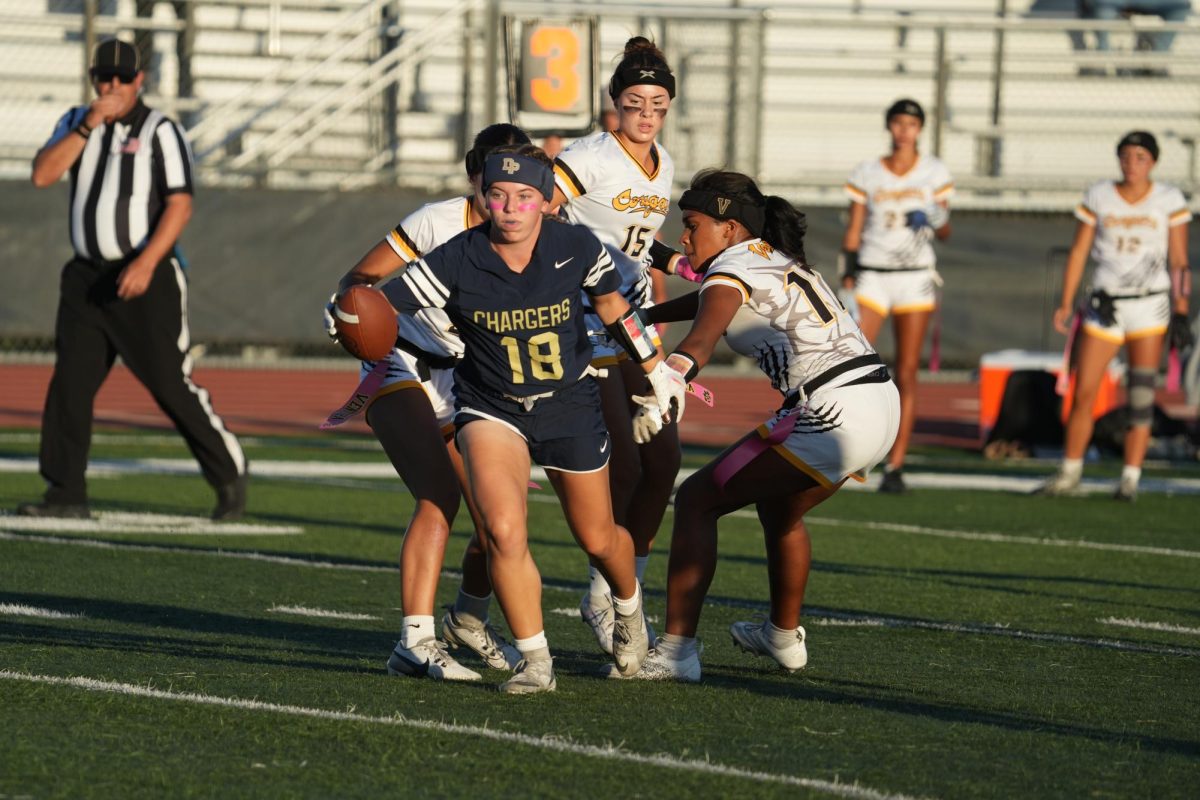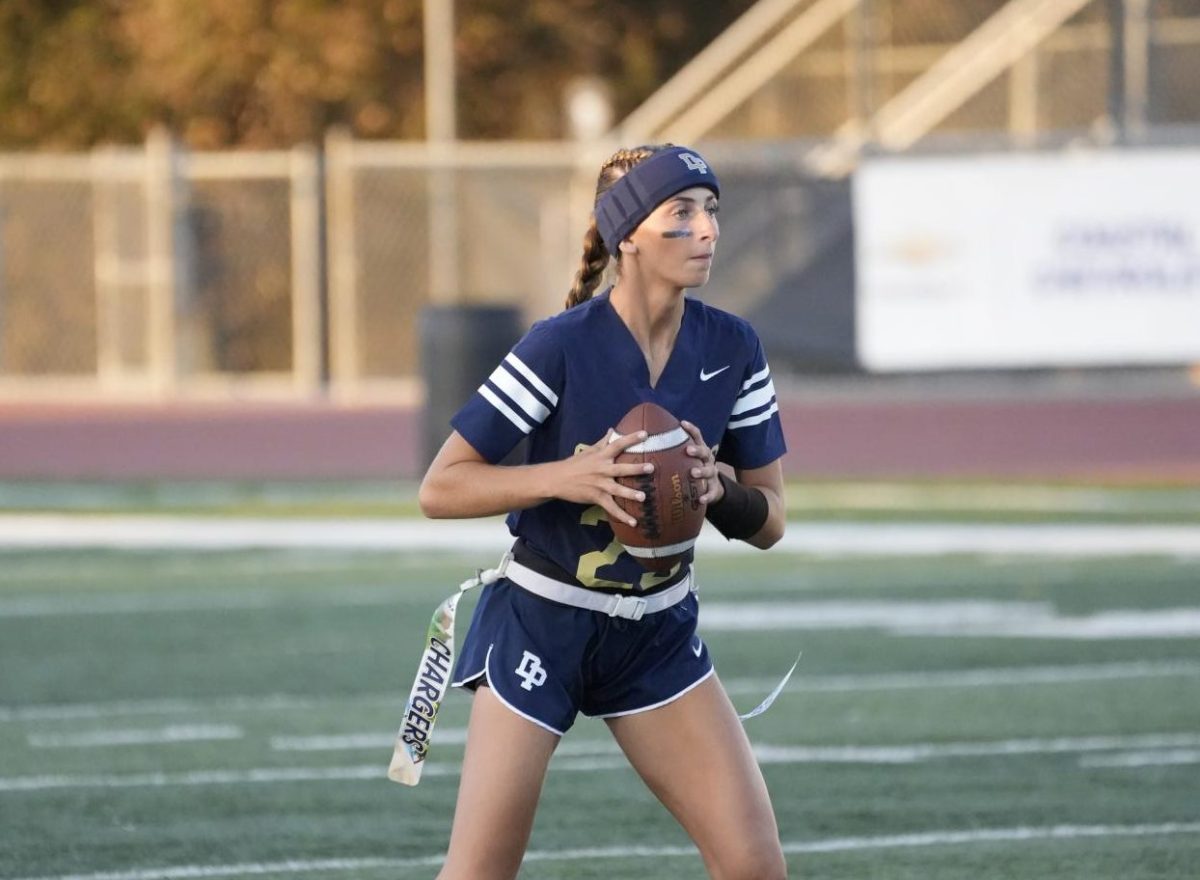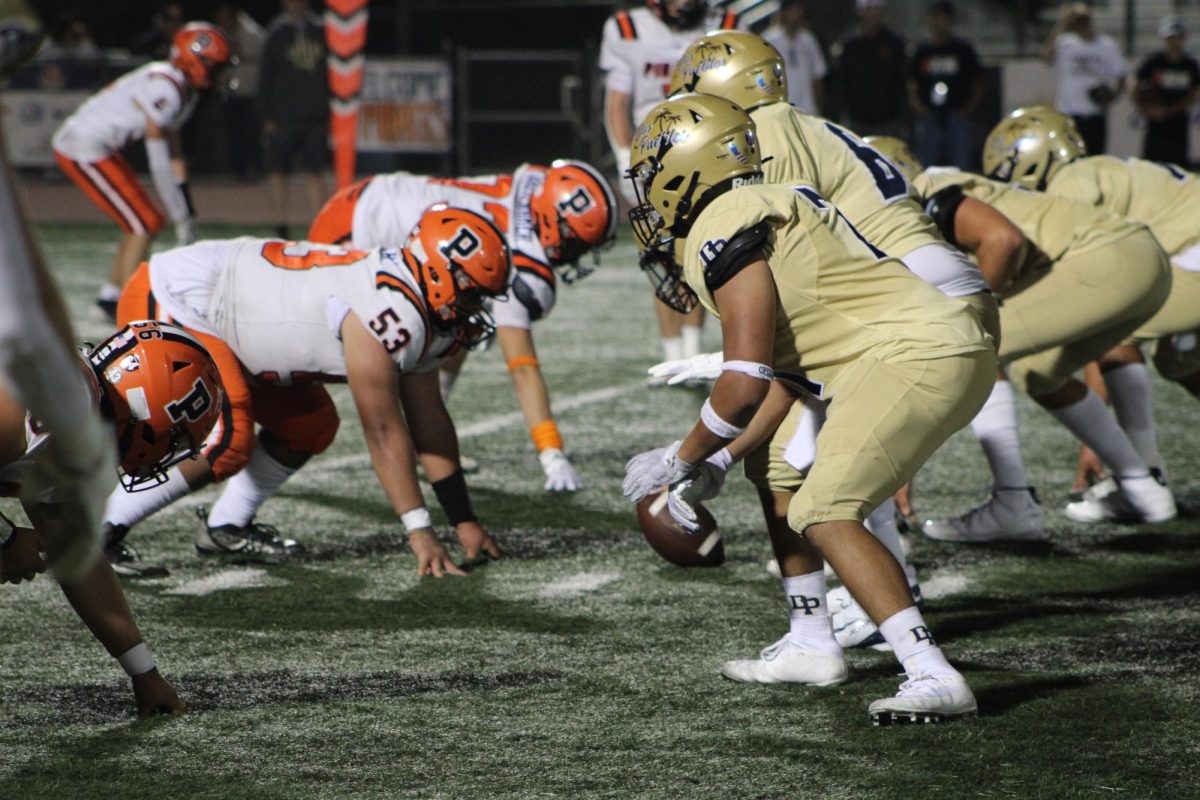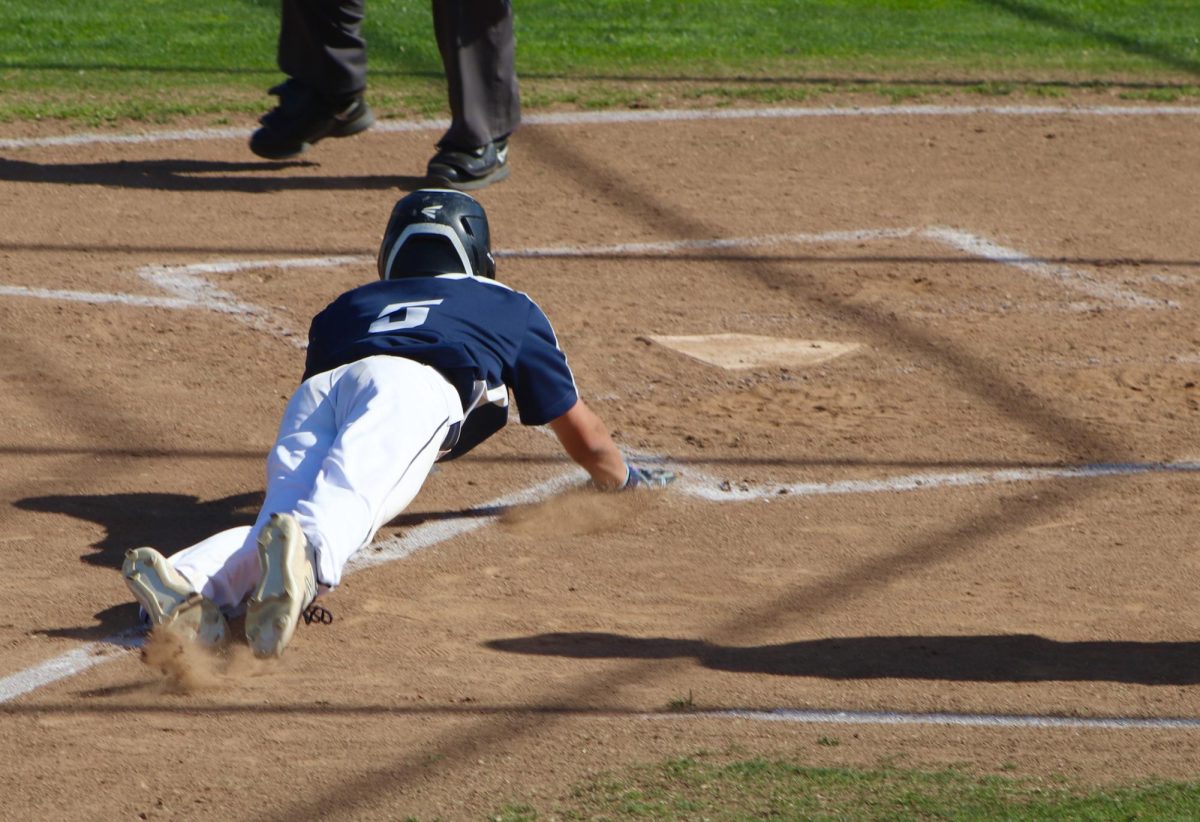When people look at cheer, they often just see smiling faces and pretty bows. But what people don’t realize is the dedication and effort that goes into routines and stunts.
Gracie Weinbender (11) has been on the cheer team for three years. This year, she participated in varsity sideline cheer and competition, which won fifth place in Nationals. She found her love for cheerleading when she was only two years old.
“I started getting into cheer because when I was really little, I loved dance,” Weinbender said. “And it’s been something I’ve been doing for as long as I can remember … And then when I got over to [Goleta Valley], they had a dance team there.”
For Weinbender, the moment of coming off the dance floor after Nationals was the best moment of her life.
“I was bawling,” Weinbender said. “And I just, it was the best feeling of my life because I could see the girls on my team and how hard they’ve worked. And my coaches were crying, and everyone was just so grateful and relieved.”
Finishing the performance gave the team a sense of satisfaction, and they felt proud of the effort they put in.
“And it’s just so cool to see the moments of performing where you can really feel all the hard work paying off,” Weinbender said. “And so because it’s such a difficult thing that takes so much effort, and so much time, and you know that it’s so much more special when things work out how you want them to.”
Weinbender often has to remember to keep trust in her teammates, even when it appears that they are struggling. Weinbender thought that she needed to focus on her role and trust that her teammates will also fulfill their duties.
“There was a moment at Nationals where I saw one of the other groups bobbling, and I just had to … trust that they are going to pull it off,” Weinbender said. “They’re gonna do what they need to do.”
After this performance, Weinbender spoke to her teammate about what happened, and the teammate told Weinbender that “today is not the day I fall.”
Oftentimes, there has been debate on whether or not cheer is a sport. While there has been an ongoing discussion, it is clear that cheer requires a certain level of athletic ability. Weinbender finds it “really disheartening” that some people don’t view cheer as a sport or as an athletic event.
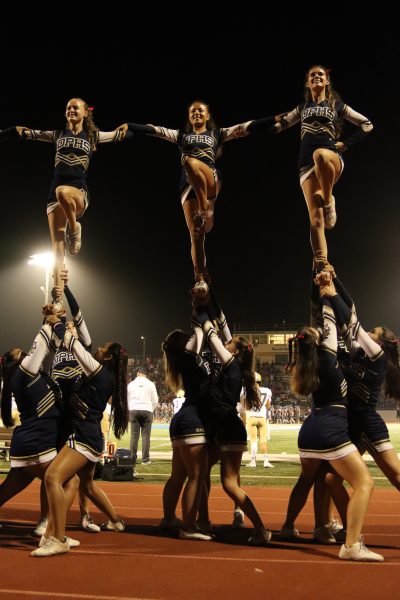
“You’re trying completely new things you’ve never done before,” Weinbender said. “Like every week, and you work on it. And then you have two minutes and 30 seconds to kind of either succeed in what you’ve been working on or not.”
During the regular season and before nationals, finding a space to practice has been
a struggle for the team. At times, they have had to bring their equipment to Goleta Valley Junior High just to practice.
“So we had to have practice that would go until 10:30 at night because we couldn’t get gym time earlier,” Weinbender said. “Or we’ll have to practice super early in the morning because we can’t get gym time.”
Cheer also requires much more time commitment than most sports, since it is year round as opposed to a season long.
“We have summer training, then football, then basketball, then parade, then competition and postseason, and then try outs and then get ready for the next year like, we do not get a break,” Weinbender said. “There were times where we would have practice two hours in the morning, four hours at night, eight hours on Saturday,” Weinbender said.
For the cheer team, trust is a crucial part of maintaining the team. For Weinbender, the combination of competition and trust within the team has made it an incredible experience.
“I really loved competing, I thought that that was really amazing,” Weinbender said. “You try a lot of new things, and you experience a lot of failure. And so the moments when you do succeed, are so much more special, because you know how hard it took you to get there.”
The team also partakes in something called matt talk, where during performances or practices they will shout encouragement to each other.
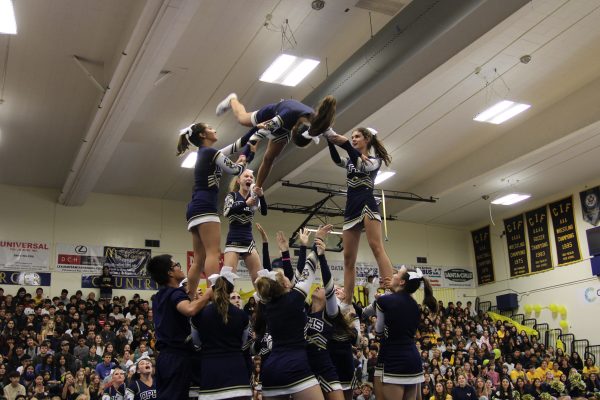
“We’ll be like ‘You got it’ or give little things to each other,” Weinbender said. “And I just get chills every time, and I want to cry because you can feel the intense love we have for each other and for the sport.”
On top of relying on each other to perform their routine well, they also rely on each other for their own safety.
“You could get seriously hurt if you don’t have trust that you’re gonna catch your teammate or that you’re gonna keep your teammate safe,” Weinbender said, “because we’re doing things where we’re literally throwing people in the air and things where if you don’t trust your team, you can seriously hurt someone.”
While the feeling of successfully completing a routine is amazing for the team, failure takes a much larger toll.
“But there are times where if someone doesn’t do their job, it’s not like, ‘Oh, well, that’s okay, we’ll make up for it by scoring another point,’” Weinbender said. “Like, if someone doesn’t execute, then that could make us lose, or that can make us not hit our routine. And so you have to trust that your team is gonna pull it off and pull through.”
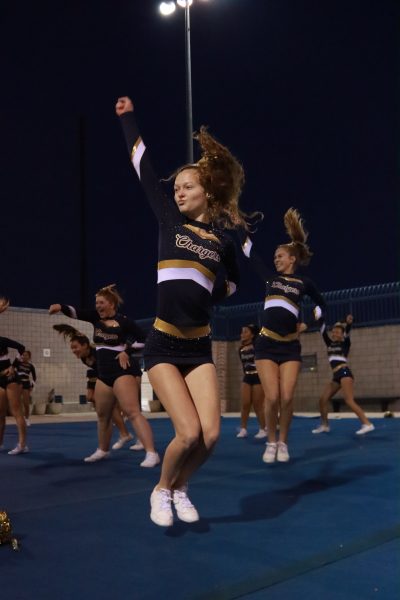
The team makes an effort to appear that their dances and stunts are effortless. Weinbender feels that it’s not a good look for the team to seem like they are struggling.
“But I think maybe we do too good of a job on that because some people will see us and they’ll be like, ‘Oh, I can do that,’” Weinbender said. “And I really wish people could just try it because it’s really hard.
The difficulty and skill level that cheer requires is often brushed off by other students. On top of this, since cheerleaders present themselves with cute outfits and beaming smiles during the entire performance, people can mistake this as a lack of effort instead of a performance.
“I don’t think people quite understand that stunts are very, very difficult and dangerous, and that it takes a lot of strength and trust and hours to learn these things and to succeed in them,” Weinbender said.
Stereotypes surrounding cheerleading makes it seem like it is drama filled and a negative environment. From Weinbender’s perspective, the bond on the team has been extremely positive.
“You have to have so much trust and you’ve gone through so much together,” Weinbender said. “We have a lot of practice time where we can just kind of bond and laugh. But we also have a lot of time where we need to be working. And so we are really good friends with each other [and] we see each other at our best and worst.”
